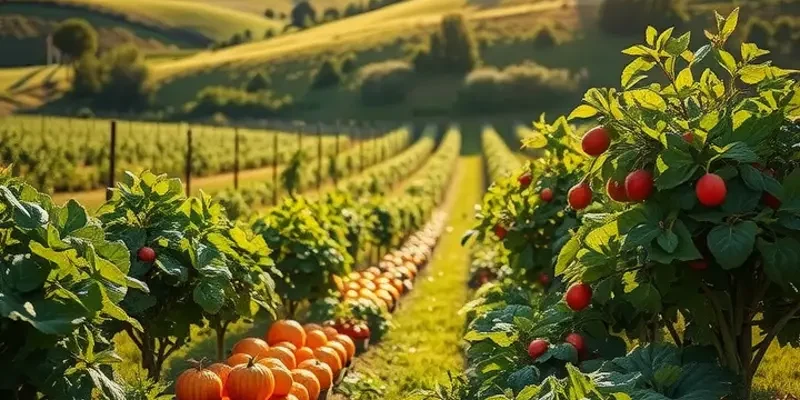Around the globe, culinary traditions represent a rich tapestry of practices, yet food waste remains a pervasive issue. Many cultures confront this challenge not just with strategies to minimize waste but by creating intricate traditions around the concept of repurposing food. From fermentation to community kitchens and beyond, cultural practices around food waste reveal deeper societal values and sustainability efforts. Delve into how unique methods from various countries not only tackle food waste but celebrate flavors, community, and resourcefulness.
The Art of Transformation: Fermentation in Asian Cuisine

Fermentation in Asian cuisine masterfully bridges tradition and sustainability, transforming perishable ingredients into enduring staples with rich flavors. This ancient practice, particularly cherished in countries like Korea, transforms leftover vegetables into delightful, nutritious treasures like kimchi.
Korean cuisine epitomizes the significance of fermentation. Kimchi, a quintessential Korean dish, is a vibrant medley of vegetables—commonly napa cabbage and radishes—fermented with chili pepper, garlic, ginger, and a touch of seafood. These ingredients are often leftovers, demonstrating resourcefulness by turning surplus produce into a beloved delicacy. The fermentation process not only extends the shelf life but also enhances nutritional value through beneficial probiotics.
Beyond kimchi, Korea’s culinary landscape features a vast array of fermented dishes contributing to its sustainable practices. Soybean paste and fish sauce, integral to Korean flavors, originate from fermentation, utilizing excess ingredients while imparting complex tastes. In Japan, miso and soy sauce are prime examples, extending the lifespan of soybeans and grains while enriching dishes with umami depth.
The art of fermentation thrives through careful orchestration. Microbial activity is harnessed to transform raw ingredients, marrying flavors over time. This transformative journey invites a celebration of bold and nuanced tastes, often taking months to reach perfection. The patience and attention dedicated to fermentation exemplify the cultural appreciation for slow, mindful consumption.
Fermentation showcases a commitment to reducing waste, reflecting ecological consciousness. It offers a low-energy method for preserving food, minimizing the need for refrigeration and diminishing spoilage. Rooted in tradition, it aligns with modern eco-friendly values, aiding sustainability efforts by preventing waste from reaching landfills.
Understanding the intricate process involves recognizing the diverse microbial strains at play. These microorganisms are unsung heroes that break down sugars and proteins, developing unique textures and flavors. Each culture’s fermentation approach yields a distinctive outcome shaped by local ingredients, climate, and tradition.
The celebration of fermentation can extend into home kitchens. By employing similar techniques, individuals can embrace sustainable living, transforming leftover produce into flavorful creations. To explore this approach further, consider exploring practical ingredient batching tips for seamless integration into daily cooking routines. Embark on efficient meal preparation through thoughtful planning and batching techniques.
Fermentation in Asian cuisine embodies a profound cultural narrative, exemplifying creativity in sustainability and culinary excellence. It transcends mere preservation, offering an exploration of flavors born from thriftiness and ingenuity. As it continues to influence kitchens worldwide, this art form reinforces a fundamental truth: transformation through fermentation is a harmonious blend of ancestry and innovation, bridging past practices with future-forward sustainability.
From Kitchen Scraps to Culinary Delights: European Approaches

In European kitchens, particularly in Italy and France, resourcefulness in the face of potential food waste reflects a deep connection to traditional practices. These cultures emphasize using every part of an ingredient, celebrating both flavor and sustainability. This chapter highlights how Italian and French cooking traditions offer creative solutions to minimize waste by transforming leftovers and scraps into delicious culinary feats.
In Italy, the cucina povera tradition symbolizes culinary ingenuity. Translating to “poor kitchen,” this frugal approach involves making the most of limited resources. Consider the famous Italian broth, often crafted with vegetable trimmings and leftover bones, showcasing the country’s penchant for maximizing flavor. By simmering ingredients that might otherwise be discarded, Italian cooks create comforting bases for soups and sauces. Additionally, in some regions, stale bread finds new life in dishes like ribollita, a hearty Tuscan soup where bread thickens a blend of vegetables and beans.
Similarly, France embraces a nose-to-tail philosophy, especially in rural areas where farming traditions prevail. French housewives and chefs alike practice a philosophy that respects the life cycle of food. Leftover bones become rich, gelatinous stocks, while vegetable tops—traditionally discarded—transform into mouthwatering pestos, celebrating vibrant flavors. Making use of every root and stem not only honors ingredients but also reduces the financial burden on households and restaurants alike.
These pragmatic techniques aren’t confined to home kitchens. Across Europe, culinary schools and top restaurants encourage apprentices to explore zero-waste cooking methods. This evolution in culinary pedagogy underscores the significance of waste reduction as an essential kitchen skill. By embedding these principles in professional education, the next generation continues to champion sustainable practices, fostering an environment where every morsel matters.
Beyond individual kitchens, community-level initiatives further the fight against food waste. In neighborhood markets, surplus produce is repurposed, providing affordable food while reducing waste. Markets in France frequently feature stalls dedicated to “ugly” produce—fruits and vegetables that might not meet aesthetic standards but are otherwise perfectly edible. These market offerings connect consumers with the source of their food, nurturing a spirit of sustainability and awareness.
As more cooks and consumers embrace these practices, Europe can serve as an inspiration for reducing waste globally. The combination of traditional methods with community-driven initiatives creates a powerful model. For those interested in integrating these practices into their own culinary routines, exploring tips for eco-smart kitchen storage can further reinforce these sustainable habits.
In embracing mindful cooking that acknowledges the journey from farm to table, European cultures remind us that respect for food extends beyond taste. It becomes a celebration of life and community—an affirmation that nothing on our plates should go to waste.
Final words
Culinary traditions around the globe offer a wealth of knowledge not just on flavor but on the sustainability of our food systems. From the artful fermentation practices in Asia to the no-waste mentality embraced in Europe, these cultural practices surrounding food waste reveal deep respect for ingredients and mindful consumption. By embracing these time-honored techniques, food enthusiasts and the culturally curious can not only reduce waste but also enrich their culinary experiences. Honor the planet and your palate by exploring these global ways of celebrating food through reducing, repurposing, and respecting every morsel.








